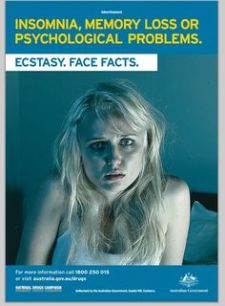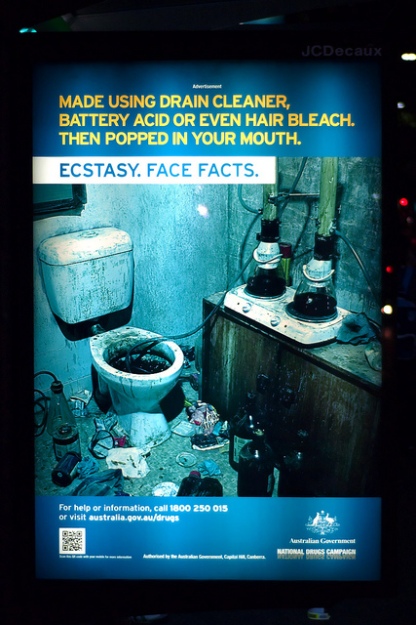Attitude (Quester p.g. 338)
An enduring combination of motivational, emotional, perceptual and cognitive processes with respect to some aspects of our environment, a learned predisposition to respond in a consistently favourable or unfavourable manner with respect to be given attitude object.
Fear Appeal (Quester p.g 355)
A type of appeal that uses threat of negative consequences if attitudes or behaviours are not altered.
During the lecture using fear in advertising was discussed. We learnt that fear appeals to elicit an emotional response of fear or anxiety. Fear appeals stress the negative consequences of their engaging or not engaging in the behaviour. It can be questioned whether or not using fear is successful in advertising. There are numerous examples of fear appeal being used in ad’s for car safety features, security alarms, life insurance, quite smoking and healthy eating.
For an advertisement using fear to get their point across, the level of fear cannot be too high as it can cause the consumer to distort or reject the message. The advertiser needs to determine the correct level of fear for it’s targeted group. Fear appeals used to avoid drug use or dangerous driving are much less criticised even though they often involve more intense fear arousing stimuli. Fear appeals are often criticised as unethical. I tend to disagree.
As being a Public Health student majoring in Health Promotion the subject of marketing the dangers ecstasy is very interesting to me, as I think the Australian Government are doing a very poor job at this. The Australian Government has spent millions on advertising the dangers of smoking and yes smoking rates have decreased dramatically, although ecstasy use is becoming more common and rapidly increasing. Last year I completed a major assessment for the subject Public Health Project, and during that time I interviewed a wide range of teenagers from the ages of 15-19. The questions that were asked and the feedback I received were all telling me that teenagers aren’t getting any fear from the ad’s they are rarely being exposed to. (Picture 1) Is an example of fear being too high to get the point across and teenagers were either ignoring or rejecting the message. They either don’t believe them or feel no fear. I asked the individuals what was scaring them the most about taking ecstasy and majority of them said was their parents finding out, getting a criminal record and being kicked out of uni.
Appeals have also been found to be enhanced by overlaying the feelings of guilt and regret, as in the Quit Smoking campaigns, targeting of smokers being not just detrimental for the individual but also for their family, I personally think this idea would help decrease ecstasy usage amount teenagers. If they don’t care about their own health as they are at the age they think they are ‘untouchable’ at least put fear into them about their future outcomes.
 (Picture 2)
(Picture 2)
Reference List.
Quester, H 2011 Consumer Behaviour; implications for marketing strategy, 6th ed: Pearson Education Australia.
Picture 1 <http://enpsychedelia.org/enpsychedelia/blog/drug-free-australia-and-australian-christian-lobby/> viewed 8th May 2014.
Picture 2 <http://gafferz.com/?portfolio=australian-government-anti-drugs-campaign> viewed 8th May 2014.
